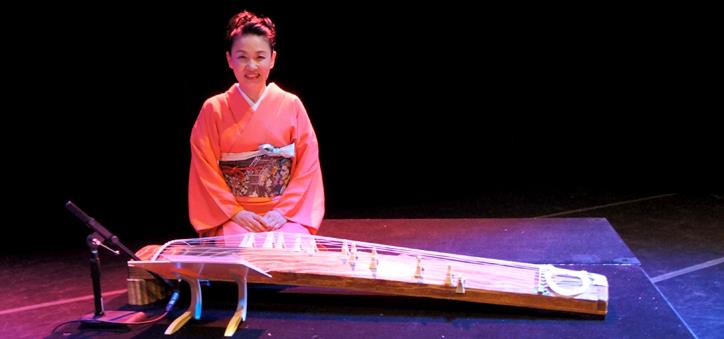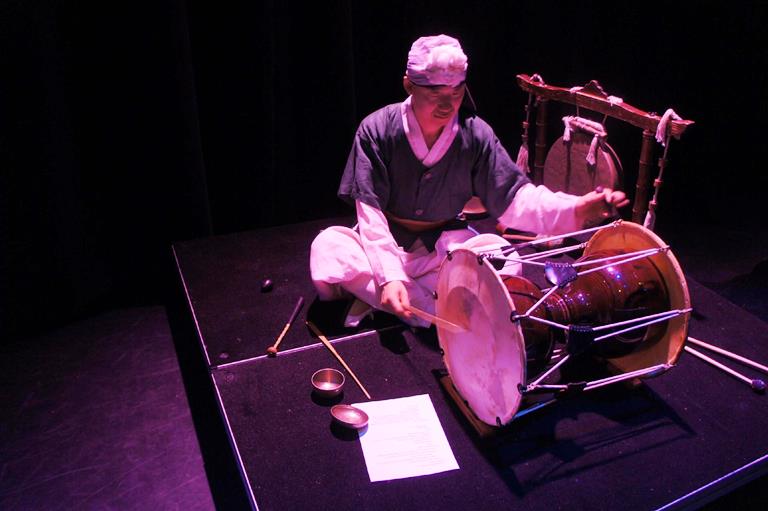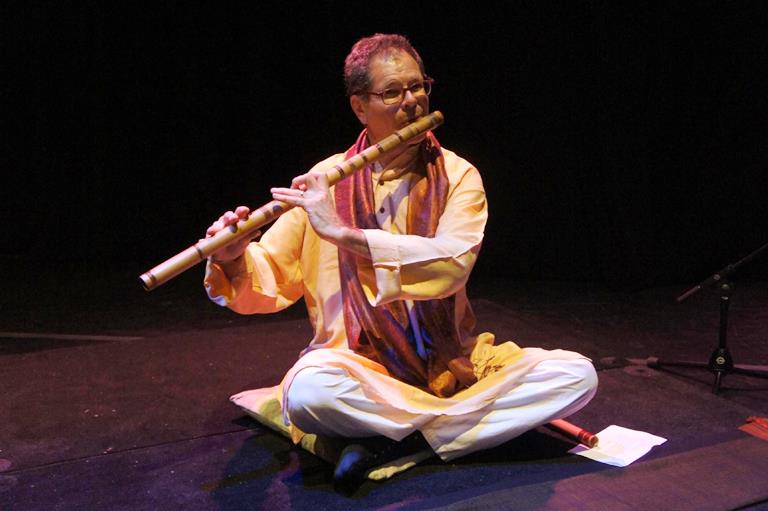By Xi Lu
The Wind from Asia Concert II is directed by three musicians from different countries: Masayo Ishigure (Japan), Vong Pak (Korea), and Steve Gorn (American in India). It helps the larger Asian American community understand and appreciate traditional Korean music as well as Indian and Japanese traditional forms. Using traditional musical instruments, such as janggu (hour glass shaped Korean percussion), bansuri (Indian flute), and koto (Japanese zither), this performance brings out the authentic and classical musical forms of these countries as well as experimental world music.
First of all, the audiences will have a chance to see the authentic beauty of traditional music from each country. ‘Seoljanggu,’ which is a highlight musical form of janggu will be presented for Korea. Then, ‘Raga’ and ‘Danmono’ will be performed for Indian and Japanese traditional music. ‘Raga’ is a melodic framework and pattern of notes, while ‘Danmono’ is a form of traditional koto composition.
The improvisation is one of the key components for both traditional and contemporary music. The three musicians showcased an improvisation session.
The entire showcase is about bringing out Asian culture and the concept of fusion in music to the audience. No matter where you come from, you can always find something in common through music. Of course, a well put together concert needs a distinguished conductor, but there is no conductor. Vong Pak directs the concert using his janggu to mark the rhythm, which gives the performance a special touch. This young musician is Korean born and Brooklyn based. He is the Finalist for the 2012 NYFA Fellowship in the category of Folk/ Traditional Arts. His extended travelling and working experience, from 25 countries, leads himself to produce such a good musical piece. Moreover, he has also released a documentary about himself that goes to the Maui Film Festival in this June.
The concert started with Ishigure and his koto, who became one of a small group of virtuoso disciples of the Sawais and successfully completed the 33rd Ikusei-kai program sponsored by NHK. The combination of the dark shadow of the stage and the vibrant Japanese melodies makes a beautiful beginning.
Rather than listening to the beautiful voice that comes out of the instruments, many audiences were amazed by the interaction between the musicians. The way they moved their fingers to play vivid melodies and their stunning innovation on techniques of playing the instruments and looking at each other in order to make the improvisations.
The concert is followed by Pak’s solo performance in Seoljanggu, which is a combination of dance and janggu playing. Each movement marks a rhythm and therefore the melody, and everything else is so well mixed.
Pak’s performance brings out the authentic pungmul form – the composition of instruments, costumes, jinpuri (choreography) – as well as seoljanggu and bupo-nori, which is the highlight of pungmul. Pungmul, also known as nongak or samulnori is a traditional Korean percussive music and dance genre performed by farmers. In these days, no longer is Korea or NYC much of an agricultural society, but VP Korean Drum and Dance Troupe, under Pak’s artistic direction, still embodies not just the technical methods, but also the spirit of pungmul, which encourages, entertains and unifies communities through the power of tradition.
Meanwhile, janggu (hour glass drum) is the most significant instrument in traditional Korean music, because it is widely used in folk music as well as shaman ritual and court music. The seoljanggu performance showed how it coordinates breathing, beat and movement through the performance as well as the visualized effect of the dynamic energy materialized through the movement of the sangmo (long ribbon attached hat) dance. Also, while a dancer plays bupo-nori (feather attached hat dance), you can see the elegance of the movement that looks like the blossoming of a flower.
The show went smoothly with Gorns’ bansuri, an Indian flute, which is featured on the 2011 Grammy winning recording, “ Miho – Journey to the Mountain,” as well as the Academy Award winning Documentary film, Born into Brothels. He has often performed in India. In 2013, he was awarded the Pandit Jasraj Rotary Club of Hyderabad Award for Cross Cultural Achievement.
The improvised “dialogue” with instruments between Ishigure and Dorn is indeed very original. On one side they use their instruments as communication tools to talk to each other, on the other side, Pak plays his janggu as a background sound to accompany their conversation.
The three musicians use the name K Gypsi for their last song; soft from the beginning, rapidly goes up and smoothly down. It seems like an Asian landscape painting, you can see the scenario and hear the sounds of horse riding coming up very closely, but you can not touch it.
Last but not least, the concert was both audibly and visually enjoyed by its audiences. All the musicians were dressed in amazing traditional costumes of their respective countries that gave the show even more taste.




Leave a Reply